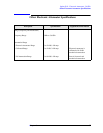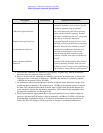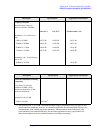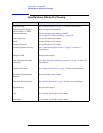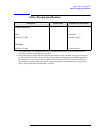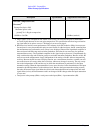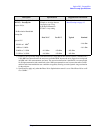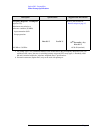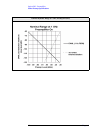
94 Chapter 4
Option P03 - Preamplifier
Other Preamp Specifications
Description Specifications Supplemental Information
1 dB Gain Compression Point
(Two-tone)
ab
a. Large signals, even at frequencies not shown on the screen, can cause the analyzer to mismeasure
on-screen signals because of two-tone gain compression. This specification tells how large an interfer-
ing signal must be in order to cause a 1 dB change in an on-screen signal.
b. Reference level and off-screen performance: The reference level (RL) behavior differs from some ear-
lier analyzers in a way that makes this analyzer more flexible. In other analyzers, the RL controlled how
the measurement was performed as well as how it was displayed. Because the logarithmic amplifier in
these analyzers had both range and resolution limitations, this behavior was necessary for optimum
measurement accuracy. The logarithmic amplifier in this signal analyzer, however, is implemented dig-
itally such that the range and resolution greatly exceed other instrument limitations. Because of this, the
analyzer can make measurements largely independent of the setting of the RL without compromising
accuracy. Because the RL becomes a display function, not a measurement function, a marker can read
out results that are off-screen, either above or below, without any change in accuracy. The only excep-
tion to the independence of RL and the way in which the measurement is performed is in the input
attenuation setting: When the input attenuation is set to auto, the rules for the determination of the input
attenuation include dependence on the reference level. Because the input attenuation setting controls
the trade-off between large signal behaviors (third-order intermodulation and compression) and small
signal effects (noise), the measurement results can change with RL changes when the input attenuation
is set to auto.
Preamp On (Option P03)
Maximum power at the
preamp
c
for 1 dB gain compression
c. Total power at the preamp (dBm) = total power at the input (dBm) − input attenuation (dB).
10 MHz to 3.6 GHz −10 dBm (nominal)




